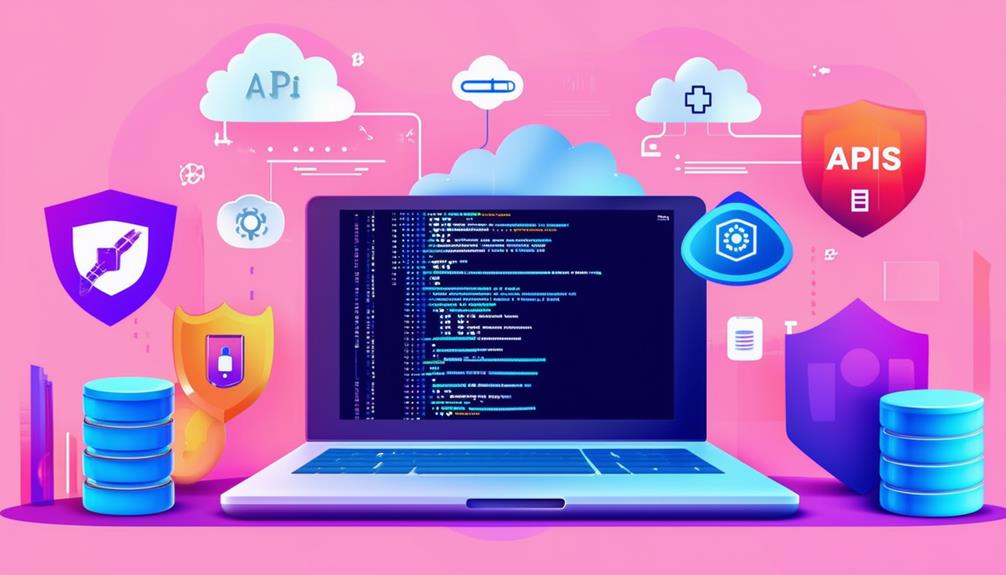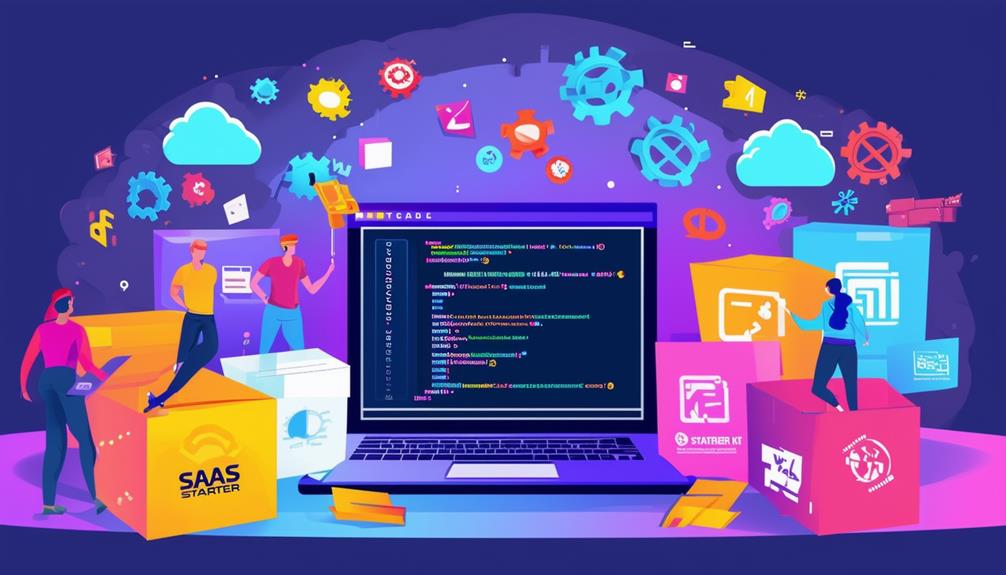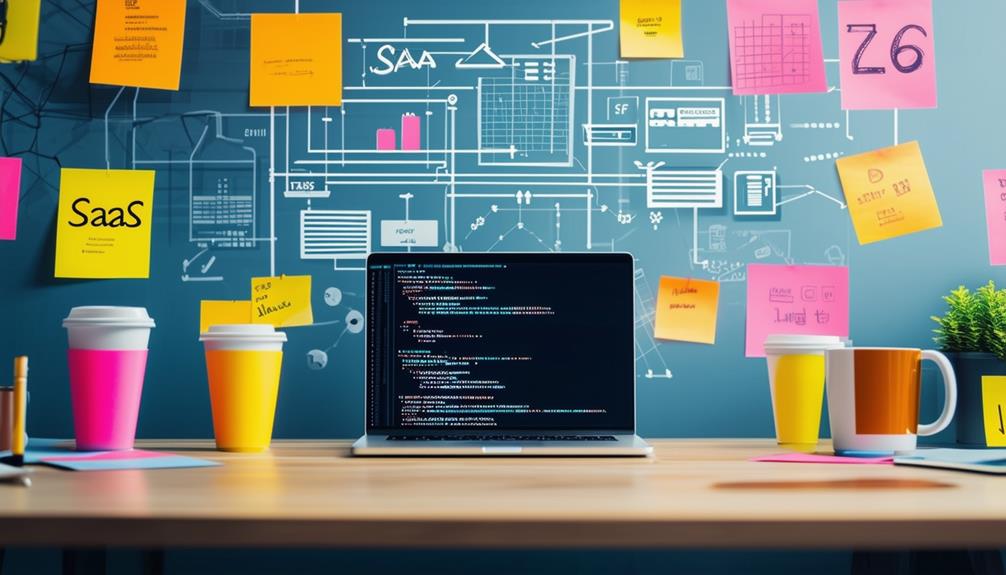When you’re choosing technologies for your SaaS boilerplate, it’s vital to take into account several factors that will impact scalability, security, and user experience. You’ll want to prioritize cloud infrastructure that offers reliability and cost-effectiveness, while picking frontend and backend frameworks that align with your project goals. Don’t overlook the importance of secure authentication, payment processing, and effective monitoring tools. But how do you balance these significant components to create a seamless experience? Let’s explore the essential technologies that can set your SaaS application apart.
Cloud Infrastructure Options
When choosing cloud infrastructure options for your SaaS application, you’ll want to contemplate factors like scalability, reliability, and cost-effectiveness.
First, consider scalability; your application should effortlessly grow to accommodate increased user demand. Look for cloud providers that offer auto-scaling features, allowing your resources to adjust dynamically as your user base expands.
Next, reliability is vital. Downtime can seriously impact your users and your business’s reputation. Select providers with robust uptime guarantees and a proven track record. Check their Service Level Agreements (SLAs) to confirm you’re getting the reliability you need.
Cost-effectiveness is another essential factor. Compare pricing models among different providers, keeping in mind that the cheapest option isn’t always the best. Look for flexible pricing that aligns with your usage patterns and allows you to pay only for what you need.
Frontend Frameworks
Choosing the right frontend framework is essential for creating a responsive and user-friendly SaaS application. You want to prioritize frameworks that not only enhance performance but also streamline the development process. Popular choices like React, Angular, and Vue.js each offer unique advantages that can elevate your application.
React, for instance, is known for its component-based architecture, which encourages reusability and makes managing complex UIs simpler.
If you prefer a more opinionated framework, Angular provides a thorough solution with built-in tools and features, ensuring your app is robust from the get-go.
Vue.js, on the other hand, strikes a balance between flexibility and ease of use, making it a great option for both small and large projects.
When selecting a framework, consider your team’s familiarity with the technology, the scalability of your application, and the community support available. A strong community can help you troubleshoot issues and access valuable resources.
Ultimately, the right frontend framework won’t only enhance user experience but also speed up your development cycle, allowing you to focus on delivering valuable features to your users.
Backend Technologies
A solid backend technology stack is essential for ensuring your SaaS application runs smoothly and efficiently, handling everything from data management to user authentication seamlessly.
When choosing backend technologies, consider languages like Node.js, Python, or Java. Node.js offers non-blocking I/O and is great for real-time applications, while Python’s simplicity is ideal for rapid development and data-heavy applications. Java, known for its scalability, is perfect for enterprise-level solutions.
Next, you’ll want to select a robust database. Relational databases like PostgreSQL or MySQL are reliable for structured data, while NoSQL options like MongoDB or Cassandra excel with unstructured data and horizontal scalability.
In terms of server management, consider platforms like AWS, Google Cloud, or Microsoft Azure. These cloud services provide flexibility, scalability, and a range of tools that can enhance your application’s performance.
Lastly, don’t overlook the importance of security. Implement technologies like OAuth for user authentication and HTTPS to secure data in transit.
With the right backend technologies in place, you’ll create a resilient and efficient SaaS application that meets your users’ needs.
API Management Solutions
Having established a solid backend, it’s time to focus on how to efficiently manage the APIs that connect your SaaS application to various services and enhance its functionality. API management solutions are essential for guaranteeing seamless communication, security, and monitoring between your application and third-party services.
Look for solutions that provide extensive features such as API gateways, which help you control traffic and enforce security policies. You’ll want to confirm that authentication and authorization are robust, protecting your data and user information.
Additionally, consider platforms that offer analytics tools. These will allow you to track usage patterns, identify bottlenecks, and optimize performance.
Don’t overlook documentation capabilities, either. Good API management solutions should help you create clear, accessible documentation for developers, making it easier to integrate your APIs and encouraging adoption.
Scalability is another critical factor; as your user base grows, your API management solution should be able to handle increased loads without compromising performance.
Investing in a strong API management solution won’t only streamline your development process but also enhance the overall user experience, setting your SaaS application up for success.
Database Choices
When deciding on a database for your SaaS application, consider the specific needs of your project, as different databases offer unique strengths and weaknesses.
You’ll typically choose between relational databases like PostgreSQL and MySQL or NoSQL databases like MongoDB and DynamoDB.
Relational databases are great for structured data and complex queries, ensuring ACID compliance, which means your data remains consistent even during failures. If your application needs strong transactional support, these might be your best bet.
On the other hand, NoSQL databases shine when handling large volumes of unstructured data, allowing for high scalability and flexibility.
Think about your data access patterns. If you need rapid read and write operations, NoSQL could be advantageous. For analytics-heavy applications, a relational database might serve you better.
Also, consider factors like hosting options, community support, and compatibility with your tech stack. Each database comes with its own learning curve, so factor in your team’s expertise.
Ultimately, choose a database that aligns with both your current requirements and future growth. This foundational decision can greatly influence your application’s performance and scalability.
Authentication Mechanisms
Choosing the right database sets the stage for implementing robust authentication mechanisms that secure user access and data integrity in your SaaS application. You’ll want to prioritize mechanisms like OAuth 2.0 and OpenID Connect, which allow for secure, token-based authentication. These protocols enable users to log in with existing accounts from platforms like Google or Facebook, enhancing user experience while maintaining strong security.
Consider implementing multi-factor authentication (MFA) as well. MFA adds an extra layer of security by requiring users to verify their identity through multiple methods—like a password and a one-time code sent to their phone. This can greatly reduce the risk of unauthorized access.
Additionally, make sure you have a solid password policy in place. Encourage users to create complex passwords and consider using passwordless authentication options, such as biometrics or magic links, to streamline access without compromising security.
Lastly, keep user authentication logs. This helps you identify potential security breaches and guarantees compliance with data protection regulations. By integrating these authentication mechanisms, you’ll create a secure environment that fosters trust and protects your users’ sensitive information.
Payment Processing Integration
Integrating a reliable payment processing system is essential for guaranteeing seamless transactions and enhancing user trust in your SaaS application.
You’ll want to choose a solution that’s not only easy to implement but also scales with your business needs. Look for providers that offer robust APIs, enabling you to customize the payment experience according to your users’ preferences.
Security is a top priority—opt for payment gateways that comply with PCI-DSS standards and provide features like tokenization and encryption to protect sensitive information. Popular options like Stripe, PayPal, and Braintree are great choices that offer extensive documentation and support.
Consider the user experience as well. A smooth checkout process can greatly reduce cart abandonment rates. Features like one-click payments and support for multiple currencies can enhance usability and expand your market reach.
Additionally, verify that the payment processor you choose supports various payment methods, including credit/debit cards, digital wallets, and bank transfers, to cater to different user preferences.
With the right payment processing integration, you’ll not only streamline transactions but also foster customer loyalty and satisfaction in your SaaS application.
Monitoring and Analytics Tools
Utilize monitoring and analytics tools to gain valuable insights into user behavior and application performance, driving informed decisions for your SaaS platform. These tools help you track key performance indicators (KPIs) and user engagement metrics, giving you a clearer view of what’s working and what needs improvement.
Consider integrating tools like Google Analytics for web traffic analysis and Mixpanel for user interaction tracking. These platforms allow you to visualize data trends, enabling you to make data-driven decisions that enhance user experience.
Additionally, real-time monitoring solutions like New Relic or Datadog can help you identify and resolve performance issues before they impact users.
Implementing A/B testing tools will allow you to experiment with different features or layouts, helping you refine your application based on user preferences.
Furthermore, consider user feedback tools to gather insights directly from your customers, ensuring you’re addressing their needs effectively.
DevOps Practices and Tools
Embracing DevOps practices and tools can greatly streamline your development process, enhancing collaboration and accelerating delivery in your SaaS environment. By implementing continuous integration and continuous deployment (CI/CD), you can automate testing and deployment, reducing the time between code commits and production releases. This leads to quicker feedback loops, allowing you to identify and resolve issues faster.
Utilizing containerization tools like Docker can also enhance your workflow. They enable you to create consistent environments for development, testing, and production, eliminating the common “it works on my machine” problem. Additionally, orchestration tools like Kubernetes help manage those containers efficiently, scaling your applications as needed.
Incorporating monitoring and logging tools is essential for maintaining system health and performance. These tools provide real-time insights into your application’s behavior, helping you pinpoint bottlenecks or failures before they escalate.
Lastly, adopting Infrastructure as Code (IaC) practices allows you to manage your infrastructure through code, promoting consistency and enabling easy replication of environments. By integrating these DevOps practices and tools, you’ll foster a culture of collaboration and efficiency, setting a strong foundation for your SaaS product’s success.
Security Features
Security features are essential in a SaaS environment, guaranteeing that your application and user data remain protected from emerging threats. You should prioritize robust authentication methods, like multi-factor authentication (MFA), to verify user identities. This adds an extra layer of security, making it harder for unauthorized users to gain access.
Encryption is another important aspect. Confirm that both data at rest and in transit is encrypted using strong algorithms. This protects sensitive information from being intercepted or accessed by malicious actors.
Additionally, regular security audits and vulnerability assessments can help identify and rectify potential weaknesses in your application. Implementing role-based access control (RBAC) is critical too. It allows you to define user permissions based on their roles, guaranteeing that only authorized individuals can access specific data or features.
Also, consider using secure coding practices to minimize common vulnerabilities like SQL injection and cross-site scripting (XSS).
To Wrap Up
To sum up, when building your SaaS boilerplate, focus on scalable cloud infrastructure, robust frontend frameworks like React or Angular, and reliable backend technologies such as Node.js or Python.
Don’t overlook secure authentication methods, seamless payment integrations, and effective monitoring tools.
Embrace DevOps practices to enhance your development process and prioritize security features to protect your application.
By choosing the right technologies, you’ll set a solid foundation for a successful SaaS venture.






